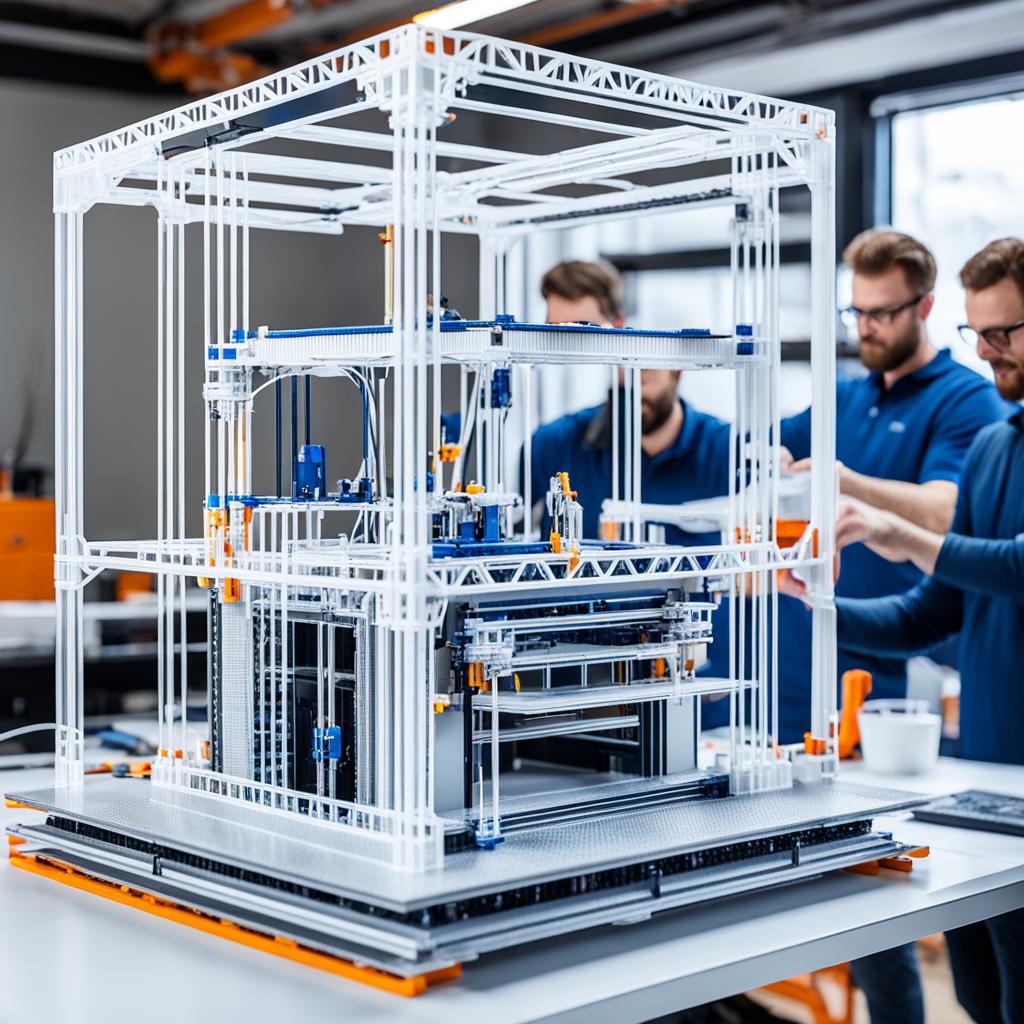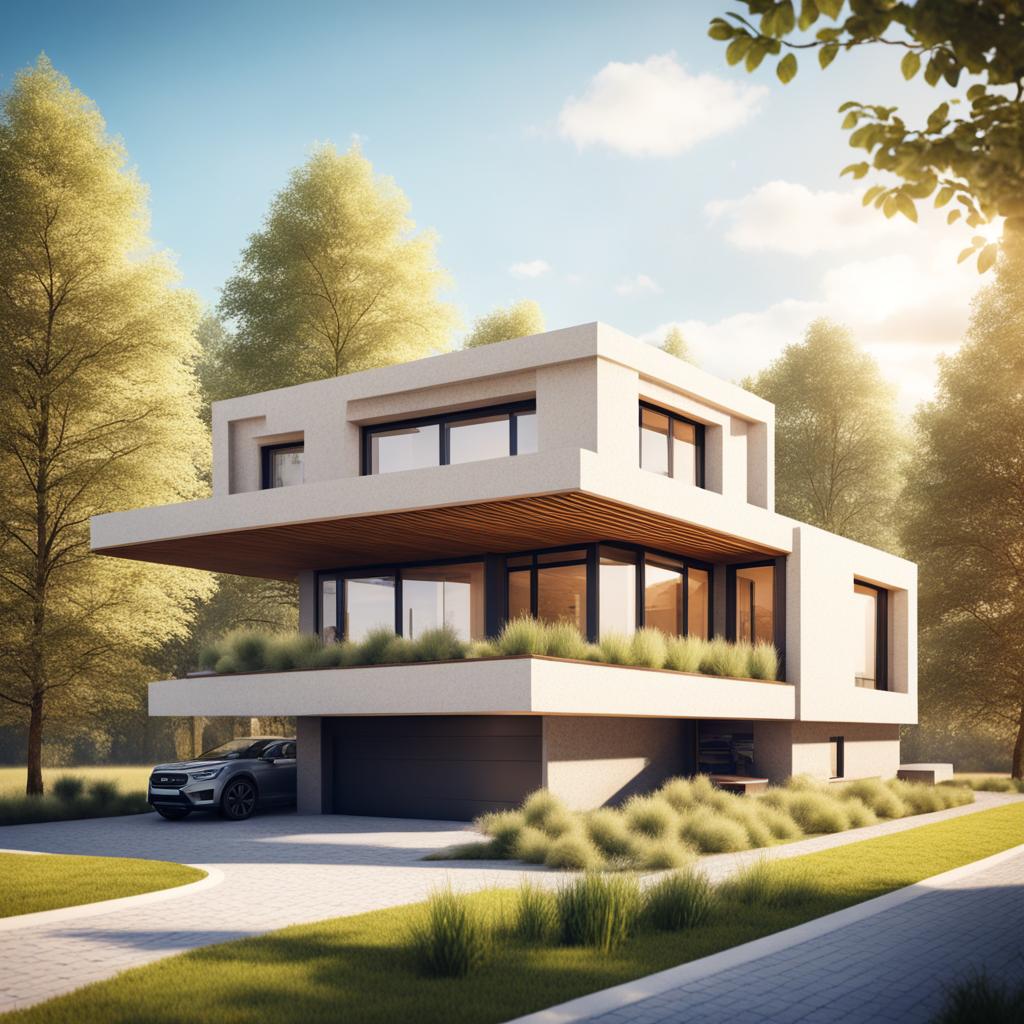3D printing technology is revolutionizing the construction industry, enabling homes to be built faster, more efficiently and more sustainably. Companies around the world are using 3D printers to create innovative, custom structures, paving the way for the future of construction.
Important Aspects
- 3D printing in construction offers complex and customized designs
- Technology reduces construction time and material waste
- The use of different types of building materials is possible
- 3D printed construction presents innovative and sustainable designs
- The technology is more sustainable than traditional construction methods
The potential of 3D printing in civil construction
3D printing technology is revolutionizing the construction industry, bringing with it incredible potential for creating innovative and sustainable structures. With the ability to print complex and custom designs, 3D printing is becoming an indispensable tool for builders and architects around the world.
One of the most significant advantages of 3D printing in construction is the reduction in construction time. Compared to conventional methods, 3D printing offers a much faster construction speed. This is because the technology allows structures to be built in layers, eliminating the need to assemble piece by piece. In addition, 3D printing also reduces material waste, as it only uses the amount needed to build the desired structure.
Flexibility in using different types of building materials is another great advantage of 3D printing. With this technology, it is possible to use a variety of materials, such as concrete, mortar and even recycled materials, depending on the needs of the project. This gives architects greater creative freedom, allowing them to create truly unique and innovative designs.
“3D printing in construction is a true technological revolution that is changing the way we build and design. With this technology, we can create complex structures, save time and resources, and at the same time promote sustainable construction.” – João Silva, civil engineer
3D printing technology is being widely used for the construction of houses of the future. These homes, often referred to as “3D printed homes,” feature innovative and sustainable designs that explore the limitless possibilities of 3D printing. With this technology, it is possible to create complex architectural forms, incorporate custom patterns and textures, and even integrate structural elements within the construction itself.
The inclusion of systems of sustainable construction This is also a key feature of 3D printed homes. With 3D printing, it is possible to integrate energy-efficient elements such as improved thermal insulation and rainwater harvesting systems. In addition, layered construction reduces material waste, making 3D printed homes a more sustainable option compared to traditional construction methods.
The following image illustrates a 3D printed house with an innovative and sustainable design:

| Benefits of 3D printing in construction | Application examples |
|---|---|
| 1. Reduction of construction time | Fabricate walls and structures in minutes instead of weeks |
| 2. Customization and flexibility in design | Creating complex shapes and custom designs |
| 3. Reduction of material waste | Precise use of the required quantity of building materials |
| 4. Integration of sustainable elements | Incorporation of energy efficiency systems and rainwater harvesting |
3D printing construction is revolutionizing the construction industry, opening doors to the future of architecture and sustainable construction. With the ability to create innovative designs, reduce construction time and promote sustainability, 3D printing is making its mark on the industry and promises a promising future for civil construction.
See too:
The 3D printing construction process
3D printing is an innovative and promising approach in the construction industry. It combines advanced 3D printing technology with conventional building materials, resulting in high-quality, customized structures.
The first step in this process involves using a large 3D printer, specially designed for construction. This printer is programmed with a specific design, which can range from an entire house to structural elements such as walls and pillars. Upon receiving the instructions, the printer moves according to a precise coordinate system, depositing successive layers of material to build the desired structure.

3D printing in construction uses common building materials such as concrete and mortar, which are mixed and deposited in layers. These materials are specially formulated to meet the required properties of strength, durability and quality. By combining 3D printing technology with traditional materials, robust and reliable results can be achieved.
One of the main advantages of 3D printing construction is the ability to create complex shapes and innovative geometries. While traditional construction methods are limited by rectangular shapes and right angles, 3D printing allows for the creation of highly customized, detailed, and curved structures. This opens the door to modern architecture and enables the development of innovative and unique projects.
3D printing in construction offers a revolutionary approach to creating innovative, customized structures. It combines the practicality of conventional building materials with the creative freedom of 3D printing, opening the door to the future of architecture.
3D printing construction also offers significant benefits in terms of efficiency and sustainability. By reducing construction time and minimizing material waste, 3D printing contributes to sustainable construction. Furthermore, the use of conventional building materials makes 3D printed structures durable and safe, ensuring the required quality and strength.
The 3D printing construction process is rapidly gaining prominence in the construction industry. With the continued evolution of technology and the increasing adoption of this approach, 3D printing construction is expected to become a common and accessible practice in the near future.
3D Printed Homes Around the World
Companies around the world are building homes using 3D printing technology. In Amsterdam, architects are working on a project to print an entire house, which will take three years to complete. In China, a team managed to print ten houses in a single day. These 3D-printed homes feature innovative and sustainable designs, paving the way for the architecture of the future.
The 3D printing revolution in construction continues to advance, with innovative and ambitious projects underway around the world. One notable example is the project to build an entire house using 3D printers in Amsterdam, the Netherlands. Architects are using advanced technology to print an entire home, from the walls to the interior details. This highly customized home will take three years to complete, but the result will be a sustainable, modern structure that represents the future of construction.
“3D printing has completely changed the way we build homes. We can now create innovative, personalized designs more efficiently and sustainably. It’s a revolution in architecture,” says the architect responsible for the project in Amsterdam.
In China, 3D printing is also making major inroads into home construction. Recently, a construction team managed to print ten houses in a single day, demonstrating the enormous potential of this technology. These 3D-printed homes are built quickly, using sustainable building materials, and feature unique, modern designs. 3D printing is paving the way for the architecture of the future, where the possibilities are endless.
3D printing construction is gaining more and more attention and recognition around the world. Innovative projects in Amsterdam and China are just a few examples of what is currently being done, but the possibilities are limitless. 3D printed homes are taking architecture to new heights, combining bold design, sustainability and advanced technology. The future of construction is 3D.
| Location | Project | Technology Used |
|---|---|---|
| Amsterdam, Netherlands | Complete house | Advanced 3D printing technology |
| China | Ten houses in one day | Large-scale 3D printing |
The benefits of 3D printing construction
3D printing construction offers a number of significant benefits to the construction industry. In addition to enabling bold, custom designs, this revolutionary technology saves time and costs while contributing to environmental sustainability.
One of the main advantages of 3D printing construction is the reduction in construction time compared to traditional methods. With the ability to print complex and detailed structures in a short period of time, construction projects can be completed in much shorter timeframes. This not only speeds up the construction process, but also allows for faster response to market needs and demands.
In addition to speed, 3D printing construction also offers significant reductions in construction costs. The technology eliminates the need for multiple workers and intermediate steps in the construction process, resulting in substantial savings in labor and materials. In addition, 3D printing allows for the efficient use of construction materials, minimizing waste and reducing material costs.
3D printing construction also contributes to sustainable construction and environmental preservation. By using conventional building materials such as concrete, mortar, and others, 3D printed homes are durable and safe. However, the 3D printing process consumes less energy and emits less carbon than traditional construction methods, making it a more sustainable and environmentally friendly option.
In short, 3D printing technology brings several benefits to the construction industry. In addition to enabling customized and innovative designs, 3D printing construction reduces construction time and costs, and is a more sustainable option. As technology advances, we can expect to see an increase in the use of 3D printing in the construction industry, making it an increasingly present trend in the sector.

The future of construction with 3D printing
3D printing is the future of the construction industry. With continued advancements in technology, 3D printed homes are expected to become more common and affordable. 3D printing will enable the creation of custom homes more quickly and efficiently. Additionally, the technology will open doors to innovative and sustainable designs, taking architecture to the next level.
By enabling the printing of complex structures, 3D printing construction makes it possible to create houses of the future with bold and unique designs. Personalization is one of the main benefits of this process, allowing homeowners to have homes tailored to their needs and preferences.
In addition to customization, 3D printing also offers advantages in terms of speed and efficiency. Building a house using traditional methods can take months or even years, but with 3D printing, construction time is significantly reduced. 3D printers are able to create walls and structures at a much faster pace, speeding up the entire construction process.
In addition to speed, 3D printing construction is also more efficient in terms of material usage. Unlike traditional methods that generate a considerable amount of waste, 3D printing uses only the necessary amount of material, minimizing waste. This results in a more sustainable and environmentally friendly construction.
By opening doors to innovative and sustainable designs, 3D printed construction drives the modern architecture. With this technology, architects have the freedom to experiment with forms and structures that would be difficult to achieve using conventional methods. This leads to a more dynamic architectural landscape, with houses of the future that stand out for their aesthetics and functionality.
In the future, we can expect 3D printing to become increasingly common and accessible. As technology advances and more companies adopt 3D printing in construction, more people will be able to enjoy the benefits of this revolutionary method. Customized, sustainable and innovative homes will become a tangible reality for many people, further boosting the construction industry.
Conclusion
3D printing technology is revolutionizing the construction industry, enabling the construction of innovative, sustainable and personalized homes. With companies around the world using 3D printers to build homes, we are witnessing the transformation of the future of the industry.
3D printing construction brings significant benefits to the industry, including reduced costs, faster construction speeds and improved sustainability. Using conventional building materials, 3D printed homes are durable and safe, while also offering innovative and creative designs.
As technology advances, we can expect to see an increase in the number of homes of the future designed and built with the help of 3D printing. 3D printing construction is opening up new possibilities for modern architecture and providing a new perspective on sustainable construction. The future of 3D printing construction is promising and is becoming an increasingly present reality.



